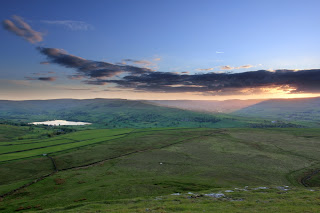If I were to ask you to conjure up a picture of a Dales resident what would that person look like?
Chances are we probably all thought of someone different, and it’s little wonder as the National Park is home to a wide variety of people of very different heritages.
And this has been the case for centuries. From the Anglo-Saxons and Scandinavian settlers, to the Romans, Vikings and Normans, and to more recent settlers from across the UK and further afield, the Dales has been a melting pot since 100 BC when the first outsiders, the Celts invaded from Europe .
Some people have come by force, some to escape or find freedom, and others to enjoy the location or seek economic success.
October is UK Black History Month and we thought, with the help of the Dales Countryside Museum , we’d explore the people and places of the Dales that have been connected with Africa, the Caribbean and India
Where people have come from, where they moved to, why they came and why they went may come as a surprise!
Slave traders, merchants and ships’ captains
For centuries, profits from transatlantic trading contributed to the development of the Western European economy, including that of the Dales. There was direct trade between Britain and Africa, the West Indies and the Americas
Knitted stockings and ‘bump caps’ made in Dent were exported to the West Indies and sugar and other goods were imported to England
Local people also travelled along the shipping routes. They filled various roles including ship’s surgeon, captain of a slaving vessel and slave trader.
Planters and plantation workers
Several Dales families owned plantations in the Caribbean . Property names such as ‘Grenada House’ in Askrigg and what was known as ‘Africa House’ in Sedbergh provide tantalising clues to the history of their past owners.
Other people from the area worked in Jamaica , Dominica , Tobago , Grenada and Barbados Dominica , while William Hillary, born at Birkrigg near Hawes, moved to Barbados
The contribution that Africa and enslaved Africans made to the wealth of certain Dales families must have been significant. For some, the inheritance of estate, property and trading interests raised both financial and ethical issues. William Place Jamaica Thomas Place Jamaica ” in 1823, was freed and came to England
Moving to the Dales
Various records show that people were brought to the Dales and the surrounding area to work as servants or nurse-maids.
 John Yorke, a “negro servant”, was baptised at
John Yorke, a “negro servant”, was baptised at
John Dalton Esquire (1726-1811), an army officer in the East India Company, also appears to have brought a servant to the Dales area. This man, York, may have been of Indian origin.
We also know that women were brought to the area as servants. William Findlay of Thorns Hall, Sedbergh, came back to the area with a servant known as ‘Black Jenny’ and the Robinson family of Newby Park
There were many cotton mills in the Dales and Yorkshire area, all processing and generating income from a slave-produced product. Greenholme Cotton Mill at Burley-in-Wharfedale employed children from St. Margaret’s Workhouse, London
Thomas Rutling was born into slavery in America Britain Harrogate in 1891, living there for at least 20 years. A linguist, he taught Italian, French and German in several local schools.
Children from the West Indies and the sons of rich Africans also attended school in the UK Richmond
Abolitionists
For some, the experience of living in other countries had a profound effect. On their return from the Caribbean to the Dales, some individuals chose to stand against slavery and to support the right for freedom and respect. They gave evidence at the House of Commons enquiries into the slave trade. Others also chose to stand in support of the abolition of slavery.
On 7 April 1798, a Leeds newspaper reported “the collection of £18 for supporting the application to Parliament for repeal of the [slave] trade ‘raised by voluntary contributions in a small part of the high end of Wensleydale... The contributors (being chiefly farmers) were informed of the injustice and inhumanity of the slave trade by pamphlets circulated previous to the collection.”
Robert Boucher Nicholls, Dean of Middleham, was born in Barbados
Henry ‘Box’ Brown was an ex-slave who spoke in favour of emancipation and travelled throughout the north of England
Closely related
The information uncovered about the Black history of the Dales by the Dales Countryside Museum
There are many stories of enslaved Africans being brought to villages which as yet have no supporting archival evidence. There are families for whom we can find no modern day link and people that we have not yet discovered.
Can you help? Have you traced your family tree and discovered some ‘hidden history’. You could contribute to the research of the Museum by getting in contact and making sure we have a full picture of the history of the Dales and the many people that have helped shape it.
Jenny Thornton was one of those people who got in touch. She’s a descendant of the enslaved African John Yorke. Mrs Thornton was eager to offer new information about her family history and was able to exchange research with Museum staff and add photographs of Yorke and her other descendants to the display.
Museum Manager Fiona Rosher
Inspired by a new interest in her family history, Jenny went on BBC Radio 4’s programme “Tracing your roots” to talk about her family history. She even got to travel out to Jamaica
The ‘Hidden History’ and ‘Dales and the Wider World’ research is available to view in our research room, and we have volunteers on hand to help visitors explore the information on Mondays and Wednesdays.






